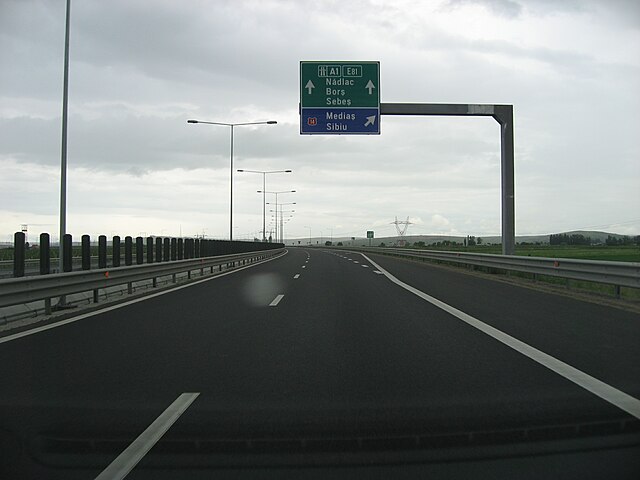Controlled-access highways in Romania are dual carriageways, grade separated with controlled-access, designed for high speeds. There are two types of highways, motorways and expressways, with the main difference being that motorways have emergency lanes and slightly wider lanes. The maximum allowed speed limit for motorways is 130 km/h (81 mph), while for expressways the limit is 120 km/h (75 mph). There are no toll roads, but a road vignette is required.
The official highway plan, proposed by the Ministry of Transport and CNADNR (CNAIR) in 2014.
A1 motorway between Bucharest and Pitești, the first Romanian motorway
A1 motorway at Pitești bypass
A1 motorway at Sibiu bypass, opened in 2010.
The A1 motorway is a partially built motorway in Romania, planned to connect Bucharest with the Banat and Crișana regions in the western part of the country and the rest of Europe. When completed it will be 581 kilometers long and it will span the country on the approximative south-east to north west direction. The motorway starts in the western part of Bucharest and connects the following major cities: Pitești, Sibiu, Deva, Timișoara, Arad, reaching Hungary's M43 motorway near Nădlac. As the motorway is built along the Trans-European Transport Networks Rhine-Danube Corridor the construction receives 85% funding from the European Union. The road is part of the proposed Via Carpatia route.
A1 motorway (Romania)
Bucharest – Pitești segment – country road overpass at km 55 (westbound view)
Pitești bypass segment – Pitești East node at km 115 (westbound view)
Sibiu bypass section – A1/DN14 node at km 246 (westbound view)





